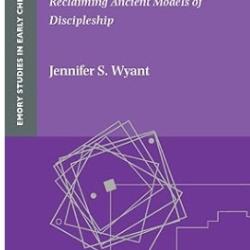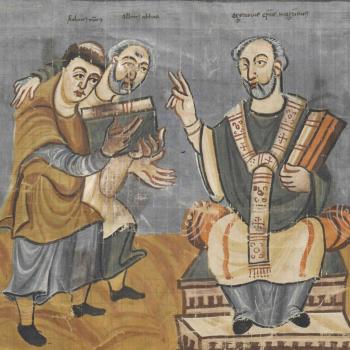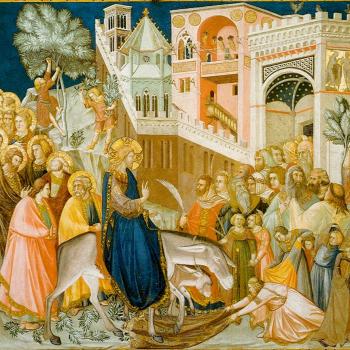I am presently writing something that draws heavily on the Old Testament sources. I am also struggling mightily with exactly how to refer to that book.
Jews call it the Bible, while Christians speak of the Old Testament. Jews, naturally and reasonably, dislike the latter term because it suggests that their scriptures are outmoded or surpassed, and many modern Christians respect these sensitivities by themselves adopting the term “Hebrew Bible” or “Hebrew Scriptures,” or even the Jewish Scriptures. But by the same token, calling the text the Jewish Scriptures or, arguably, the Hebrew Bible, suggests that it is a Jewish possession that Christians don’t fully or rightfully own. If there is one thing that Christians do not need, it is another excuse to deny the Jewish roots of their faith, and their scriptures.
For various reasons, though, it is exceedingly difficult to find a neutral or wholly accurate term for this collection because the Hebrew Bible and Old Testament are just not identical in their contents. This requires some explanation. The Jewish Bible – the “Hebrew Bible” – has three sections, the Torah (Law), Nevi’im (Prophets) and Ketuvim (Writings), which gives us the acronym Tanakh. In the books that it treats as approved or canonical, that collection corresponds exactly to the Protestant Old Testament. The precise number of books in each version differs somewhat, because works that are treated as a unity in the Hebrew (eg Ezra and Nehemiah) are distinguished in the Protestant text. (I have written about that recently).
In its approach to the canon, though, the “Hebrew Bible” represents one approach, but not necessarily the only one. During the third and second centuries BC, Jewish scholars translated Biblical texts into the Greek version known as the Septuagint. Because it is a translation, one would assume that its readings are inferior to those of the Hebrew or Aramaic, but that is not always so. In many cases, the Septuagint preserves readings that are older and arguably more authentic.
Also, the Septuagint reflects the choice of books prevailing in that ancient era, and it is considerably wider than what is found in the Tanakh. The fact that certain books were accepted within the canon while others were rejected owed much to historical accident, but it was largely based on critical and historical assumptions that were not always sound – for instance, about deciding which books were authentically ancient, or rooted in genuine history. If even Esther was accepted as canonical, it is astonishing that anything else was ever rejected.
Based on the Septuagint, and other Greek texts, most Christian churches from early times through the Reformation also included in their Old Testaments several other books, such as 1 and 2 Maccabees, Sirach (Ecclesiasticus), Tobit, Baruch, Judith and the Wisdom of Solomon; and in addition, they knew more extended versions of books like Daniel and Esther. Few of the early Church Fathers had any doubts about that choice of canon. During the sixteenth century Reformation, Protestants demoted these books to the inferior level of Apocrypha, “hidden things,” while usually printing them within the same volume as other writings. That division, though, was never observed by Roman Catholics or Orthodox, or by many other less numerous churches around the world. For non-Protestants, therefore, these Deuterocanonical books (literally, the “Second Canon”) are canonical rather than merely apocryphal, and they are definitely part of the Old Testament.
Orthodox churches use the category of anagignoskomena, “those which are to be read,” which includes the Deuterocanonicals, but also 1 Esdras, 3 Maccabees and Psalm 151. These are to be read for profit and instruction, but not necessarily to establish doctrine.
To illustrate the problem, I often refer to the influential book of Sirach, which was originally written in Hebrew around 190 BCE, although historically it was mainly known in Greek. It does not form part of either the Hebrew Bible or the Protestant Old Testament, but it is canonical for Catholics, Orthodox and other groups. It thus forms part of the Old Testament by some accounts – but not the Hebrew Bible. The same is true of Tobit.
By the way, the Qumran sect at the Dead Sea read both Tobit and Sirach, and they were especially fond of Tobit, with its angels and demons. We do not know whether they regarded them as canonical, or if indeed that distinction actually meant much to them.
Sirach, then, is not part of the Hebrew Bible/Protestant Old Testament, although Daniel – most of which was written a generation later – is included. Sirach comes from a known, named author, while Daniel is pseudonymous.
Complicating the matter further, some sizable churches have long operated in isolation from other Christian communities, and they are still more expansive in their definitions. The most significant is the Ethiopian Orthodox Tewahedo church, which counts an impressive forty million members. Besides the familiar books of the Protestant Bible, plus the Catholic/Orthodox Deuterocanonical works, they also use and canonize other significant writings which once circulated widely, but which were forgotten elsewhere. These include 1 Enoch and the Book of Jubilees. Various churches worldwide also accept additional books under the general name of “Maccabees.”
Around the world, non-Protestants outnumber Protestants by at least two to one. Numbers are not everything, but they are not nothing.
With all due caveats, then, I plan on different occasions to use both the terms “Hebrew Bible” and “Old Testament,” sometimes with additional detail to explain how I am using the words in a particular context. I don’t suppose I can get away with “The books formerly known as the Old Testament,” can I?
If you refer to the “Old Testament” then, I will be asking: which Old Testament do you mean?
















